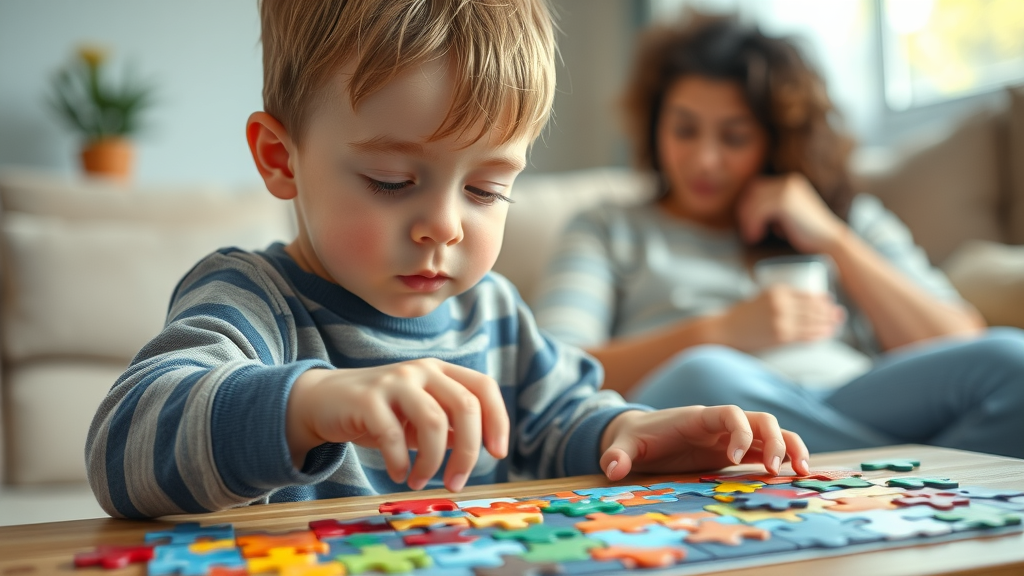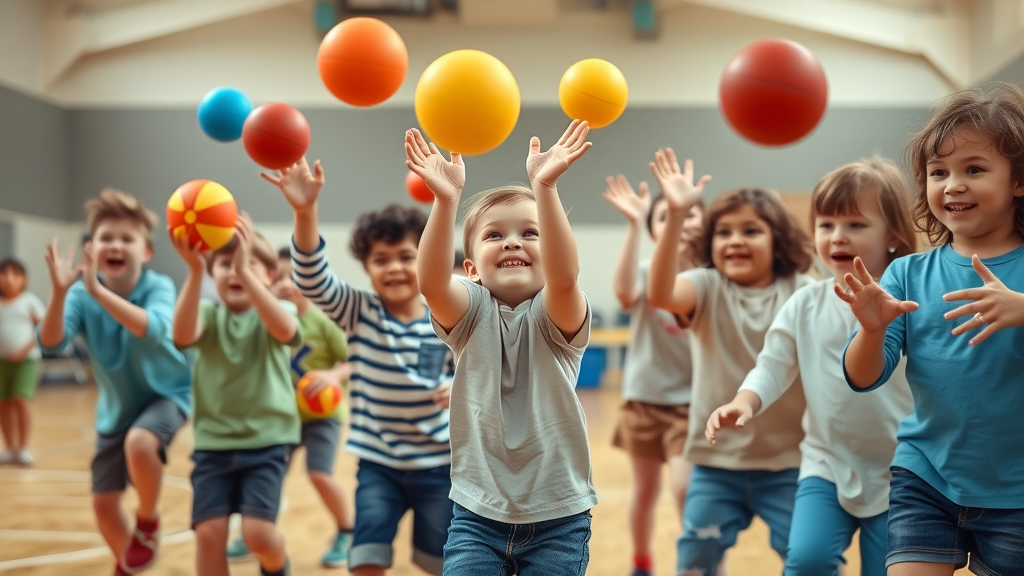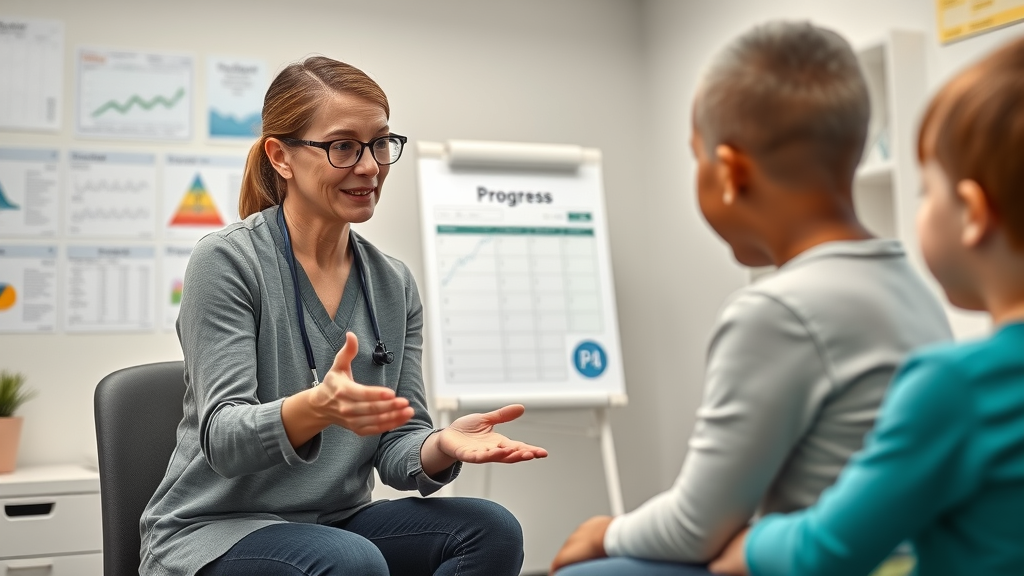Did you know that up to 87% of children with autism spectrum disorder (ASD) experience some form of motor skill difficulties—impacting daily routines, learning, and independence? Motor skills development in autism is a crucial focus for families, educators, and therapists. Whether you’re navigating the first signs of motor delays, exploring effective interventions, or seeking the newest technologies, this guide will empower you with actionable science-backed strategies and practical solutions—so that every child can reach their potential.
Unlocking Motor Skills Development in Autism: Understanding the Landscape
The journey of motor skills development in autism can look very different from one child to the next. While some autistic children excel in visual or cognitive areas, fine and gross motor skills often require focused support. Motor impairments in children with ASD—such as delayed crawling, difficulty manipulating objects, or challenges with coordination—can influence their ability to participate in daily activities, play, and schoolwork. Understanding this landscape is the first step toward identifying effective solutions.
For example, a child with autism may struggle with fastening buttons, holding a pencil, or participating in team sports due to underlying motor skill challenges. Such difficulties are not just physical hurdles—they can affect self-esteem, social interactions, and overall well-being. Early identification of these challenges in children with autism spectrum can enable targeted interventions, helping every child develop the essential gross and fine motor skills needed for greater independence.

"Recent studies show that up to 87% of children with autism spectrum disorder experience some form of motor skill difficulties, impacting daily routines and overall quality of life."
Key Takeaways for Motor Skills Development in Autism Spectrum Disorder
- Explore evidence-based interventions for fostering motor development in autism spectrum
- Distinguish between fine and gross motor skills in children with ASD
- Discover practical activities to boost motor skills in autistic children
- Gain insights from expert recommendations and real case studies
The Science Behind Motor Skill Difficulties in Autism Spectrum Disorder
How Does Autism Affect Motor Skills?
Autism spectrum disorder is characterized by more than just challenges in communication and social interaction— motor skills development in autism is often impacted from an early age. Research shows that autistic children commonly experience difficulties in movement planning, coordination, and muscle tone, leading to what is classified as motor impairment . These challenges can be linked to differences in brain regions responsible for motor planning and sensory processing, resulting in both fine and gross motor delays .
For instance, the ability to sequence movements (such as tying shoelaces or writing), balance, and adapt to new motor tasks can be especially difficult for children with ASD. Disorders in sensory processing further complicate these tasks, creating barriers that impact learning and daily functioning. Understanding these underlying neurological factors is critical for designing effective, individualized therapies for children with autism .

Defining Motor Development in Autism Spectrum Populations
Motor development in autism spectrum populations refers to how children acquire and refine both fine and gross motor skills —from grasping toys to jumping and navigating playground equipment. In neurotypical children, these skills progress predictably through developmental milestones. However, for those with ASD, the trajectory may be delayed, atypical, or uneven. It’s critical to recognize that **motor impairment** in autism isn’t just about “being clumsy”—it can involve muscle weakness, unusual gait, poor hand-eye coordination, and difficulties in completing multi-step motor tasks.
Diagnostic criteria for ASD increasingly include assessments for motor symptoms, as these difficulties often precede or accompany communication and social interaction challenges. By systematically evaluating gross and fine motor skill abilities in children with ASD, therapists and parents can identify strengths, design support plans, and track progress toward independence.
Core Challenges: Motor Impairments in Children with ASD

Motor Difficulties in Autism Spectrum Disorder: Symptoms & Signs
Many children with autism display clear signs of motor impairment early in life. Observable symptoms include delayed sitting, crawling, or walking; trouble grasping objects; inconsistent hand dominance; and difficulty with tasks like cutting, drawing, or using utensils. Some autistic children may walk on their toes or have unusual postures when standing or moving.
Importantly, motor difficulties in ASD often manifest alongside challenges in social interaction and sensory processing. This means that efforts to improve motor skill development should be sensitive to sensory preferences and aversions—for example, a child who dislikes certain textures may resist activities involving clay or sand. Recognizing these overlapping symptoms is vital for planning inclusive and effective interventions.
At What Age Can Motor Deficits Associated with ASD Be Seen?
Motor deficits related to ASD can be observed very early, sometimes as soon as infancy. Parents and clinicians may notice lagging head control, limited reaching or grasping, and delayed crawling before communication delays emerge. In many cases, motor skill delays become more pronounced as demands for coordination and dexterity grow—typically between 12-24 months of age.
Early detection of motor challenges allows for prompt referral to occupational or physical therapy, setting the stage for timely intervention. Facilitating motor skills development in autism before school age improves not only movement capabilities but also readiness for learning and social participation.
Stages of Motor Skill Development in Autism

What Are the Stages of Motor Skill Development?
Typically, both neurotypical and autistic children move through similar stages of motor development , though children with ASD may do so at a different pace or in an atypical order. Early stages involve basic movement and reflexes—rolling over, grasping, and sitting—followed by crawling, standing, and walking. As children grow, more complex fine and gross motor skills develop—jumping, riding a bike, cutting with scissors, or drawing shapes.
For children with autism, mastery of each stage often requires extra scaffolding and patience. Slow progress in areas like balance and muscle coordination may precede challenges in school-based motor tasks such as handwriting, joining group games, and using tools for learning. Monitoring progress across these stages is essential for customizing therapy and celebrating achievements.
| Age | Milestone (Neurotypical) | Milestone (Autism Spectrum Disorder) |
|---|---|---|
| 6-12 months | Sitting without support, crawling, reaching for objects | Possible delays in sitting and crawling, less coordinated reaching |
| 12-24 months | Walking independently, stacking blocks | Delayed or unusual walking patterns, difficulty stacking |
| 2-4 years | Running, jumping, drawing lines and circles | Trouble with running, tiptoe walking, irregular drawing skills |
| 4-6 years | Using scissors, catching a ball | Poor eye-hand coordination, struggles with catching or cutting |
Fine Motor Skills and Autism: What You Need to Know
Poor Fine Motor Skills in ASD: Characteristics & Examples
A common concern among caregivers is the presence of poor fine motor skills in autistic children. Fine motor skills—such as pinching, buttoning, or drawing—require precision and strength in the small muscles of the hands and fingers. Children with ASD frequently have trouble with manual dexterity, making tasks like zipping coats, eating with utensils, or writing letters more challenging.
These difficulties can impact academic success and life skills, as fine motor delays hinder participation in classroom activities and independent living tasks. Signs include awkward pencil grip, using two hands when one should suffice, and a tendency to avoid detailed motor tasks . Close observation and formal assessment help determine the extent of fine motor impairment so personalized support can be introduced.

Effective Interventions Targeting Fine Motor Skills in Autism Spectrum
- Occupational therapy techniques for fine motor skill development
- Home-based activities: threading beads, building blocks, drawing
- Assistive technology and adaptive tools for autistic children
One of the most effective interventions for fine motor skills in ASD is occupational therapy , which uses structured, play-based exercises to enhance hand-eye coordination, grip strength, and dexterity. Activities such as threading beads, manipulating building blocks, and practicing handwriting are both enjoyable and therapeutic for autistic children.
Leveraging assistive technology—from adapted pencils to interactive learning games—can provide extra motivation and support for children with more significant motor difficulties. Family involvement is key; when parents embed fine motor activities into routine play and household chores, progress is often faster and more sustainable.
Gross Motor Skills and Motor Skill Development in Autism
Understanding Gross Motor Skill Development in Autism Spectrum Disorder
Gross motor skills involve movements of the large muscles used for activities such as running, jumping, climbing, and balancing. Children with autism often present with delayed gross motor development, which can manifest as unusual gait, poor balance, or low muscle tone.
These issues can make participation in group sports, physical education, or playground games difficult, sometimes leading to social isolation. Emphasizing gross motor skill development in children with ASD helps promote fitness, confidence, and peer interactions while laying the foundation for advanced motor planning required in complex movement tasks.

Physical Activities to Enhance Gross Motor Skills in Autistic Children
- Simple exercises: hopping, skipping, catching balls
- Group therapies and adaptive sports
- Balance and coordination games for children with autism
Engaging autistic children in structured physical activities is a proven way to boost gross motor skill development . Simple exercises like hopping, skipping, and ball games enhance muscle strength, range of motion, balance, and coordination. Group therapies and adaptive sports provide a social setting for learning movement through imitation and teamwork.
Balance games—such as walking on a line or balancing on a beam—are especially effective for improving core stability, a common challenge in ASD. Therapists may recommend progression from easy to more complex activities, adapting routines to individual energy levels, attention, and unique sensory preferences for optimal results.
Motor Skill Development Strategies for Children with Autism Spectrum Disorder

Role of Parents, Therapists, and Educators in Motor Skills Development in Autism
Supporting motor skills development in autism is a collaborative endeavor. Parents, therapists, and educators each play a unique role in helping children reach their potential. While therapists provide structured interventions targeting both **fine and gross motor skills**, parents can reinforce learning at home by incorporating movement-based activities into daily routines.
Educators are essential for providing inclusive classroom opportunities—such as adapted physical education or occupational therapy sessions at school—to ensure that autistic children don’t fall behind in skill acquisition. Regular communication among team members enables the sharing of progress, challenges, and creative adaptations to meet each child's evolving needs.
Skill Development Interventions: What Works Best for Children with ASD?
- Evidence-based occupational and physical therapy programs
- Personalized motor skill development plans
- Integration of motor skills practice into daily routines
The gold standard for addressing motor impairments and facilitating skill development in ASD includes occupational therapy , physical therapy , and personalized intervention plans . Evidence-based programs are most successful when tailored to the specific needs, strengths, and interests of each child. Embedding motor skill practice into daily routines—dressing, mealtime, play—maximizes opportunities for learning and retention.
Families should prioritize consistency and patience, recognizing that even small, incremental gains can accumulate into meaningful improvements in independence and quality of life for children on the autism spectrum .
Innovative Tools and Technologies Supporting Motor Skills Development in Autism
Assistive Technologies for Individuals with Autism Spectrum Disorder
- Interactive apps and gamified learning
- Wearables tracking progress in motor skills
- Virtual reality experiences for skill development
Today’s technological advancements offer powerful tools to supplement traditional therapies for motor skills development in autism . Interactive apps, gamified exercises, and adaptive learning platforms motivate participation while providing instant feedback. Wearable devices can track step count, movement, and range of motion over time, giving therapists and parents useful data for fine-tuning support plans.
Virtual reality (VR) is an exciting new frontier—VR can simulate real-world scenarios, allowing autistic children to practice fine and gross motor skills in a safe, controlled environment. These technologies offer personalized and enjoyable options for individuals with autism , especially those who are tech-inclined or motivated by digital rewards.

Case Studies: Real-World Success Stories in Motor Skill Development in Autism
Across the globe, countless families have witnessed transformative improvements in motor skills through a combination of early intervention, structured therapies, and innovative technologies. One case example involves a preschooler diagnosed with ASD who could not hold a crayon or cut paper independently. After six months of occupational therapy—augmented by interactive tablet games focusing on hand strength—she began writing her own name and cutting shapes, milestones that once seemed out of reach.
In another instance, a group of autistic children participated in an adaptive sports program with physical therapists. This group not only enhanced their balance and gross motor skills but also built self-confidence and friendships—benefits that extended far beyond movement alone. Each success story reinforces the vital principle: individualized, consistent, and collaborative strategies truly make a difference for children on the autism spectrum.
Frequently Asked Questions: Motor Skills Development in Autism Spectrum Disorder

How does autism affect motor skills?
Autism spectrum disorder often affects both fine and gross motor skills due to differences in brain structure and function. Children with ASD may show delays in reaching physical milestones, display awkward movements, or have difficulty coordinating complex motor tasks . Sensory sensitivities and challenges with muscle tone are also common.
What are the stages of motor skill development?
The stages of motor skill development range from early activities like reaching, sitting, and crawling, to more advanced skills such as running, jumping, cutting, and writing. While neurotypical children tend to progress predictably, autistic children may skip stages, progress slowly, or develop skills in an uneven pattern.
What are the poor fine motor skills for ASD?
Poor fine motor skills in autism can include weak grip, difficulty grasping or manipulating small objects, awkward drawing or writing, and trouble with tasks requiring precision like buttoning or eating with utensils.
At what age can motor deficits associated with ASD be seen?
Motor deficits linked to ASD can be observed as early as infancy. Parents may notice delays in sitting, crawling, or walking within the first year. As children age, additional challenges with coordination, balance, and fine motor skills often become more apparent.
Expert Insights on Improving Motor Skills in Individuals with Autism Spectrum
"Early intervention and consistent, tailored practice can significantly close the motor skills gap for children with autism spectrum disorder—every small gain matters for lifelong independence." – Leading Pediatric Occupational Therapist

Action Steps: Supporting Motor Skills Development in Autism at Home and School
- Create structured routines that include time for motor activities
- Combine visual, tactile, and physical prompts
- Partner with professionals for regular skill assessments
Further Exploration: Video Guides for Motor Skills Development in Autism
Looking for more ways to support motor skills development in autism? Explore trusted video tutorials led by occupational therapists and educators—these visual guides demonstrate practical exercises for both fine and gross motor skills. Many families find step-by-step video modeling to be a motivating and accessible resource for home-based practice.
Summary and Key Takeaways on Motor Skills Development in Autism
- Motor difficulties in autism require a holistic, patient-centered approach
- Fine and gross motor delays can be mitigated with early, targeted interventions
- Parental involvement, technology, and structured practice lead to best results
Start Your Journey: Building a Brighter Future for Children with Autism Spectrum Disorder
- Consult occupational and physical therapists
- Utilize assistive technology for home-based exercises
- Stay informed and proactive with the latest research
Start today by engaging your child in play-based motor activities, reaching out to experts, and exploring the newest tools for progress—every milestone is a step toward greater independence and lifelong success.
 Add Row
Add Row  Add
Add 




Write A Comment